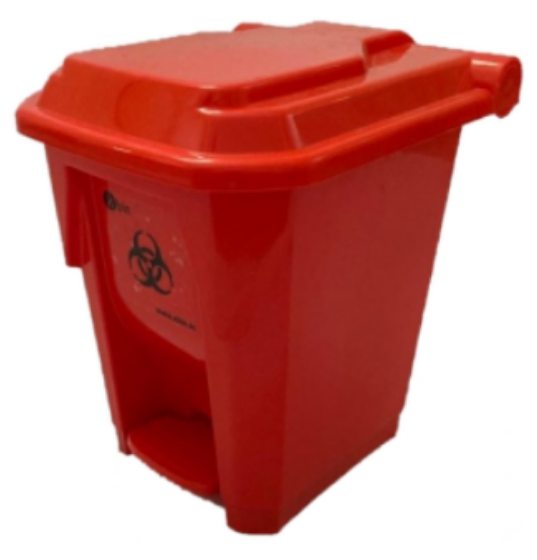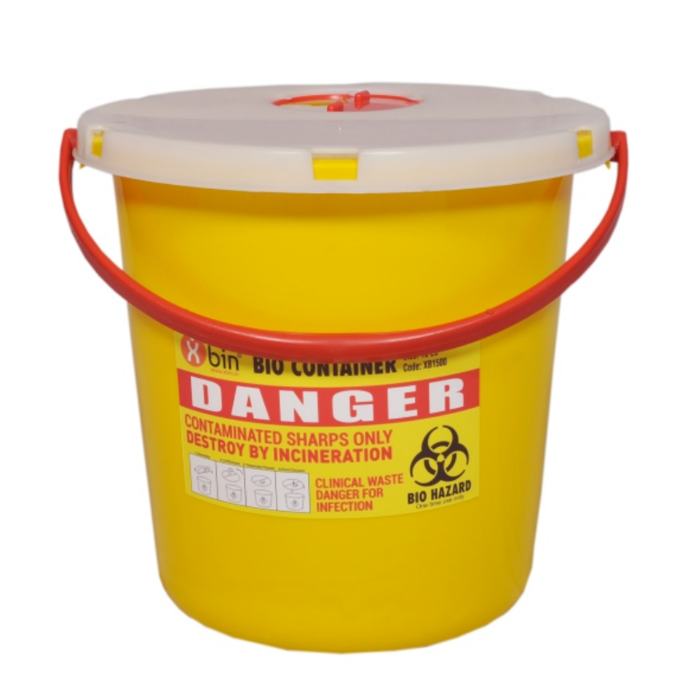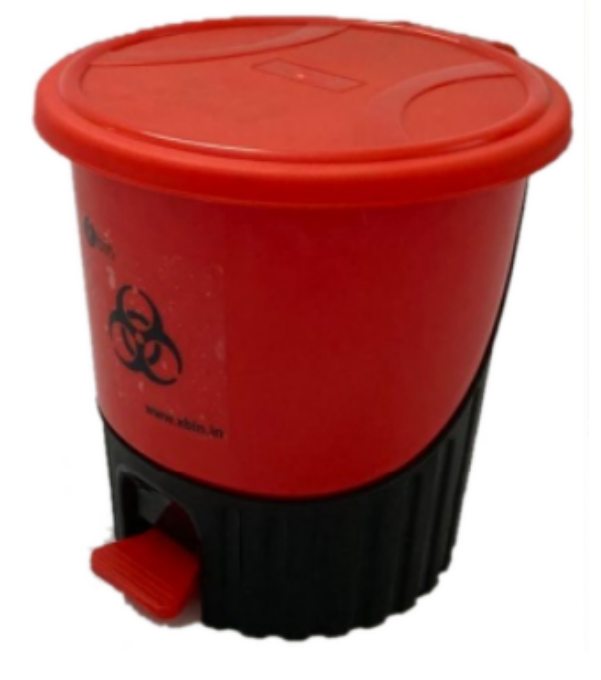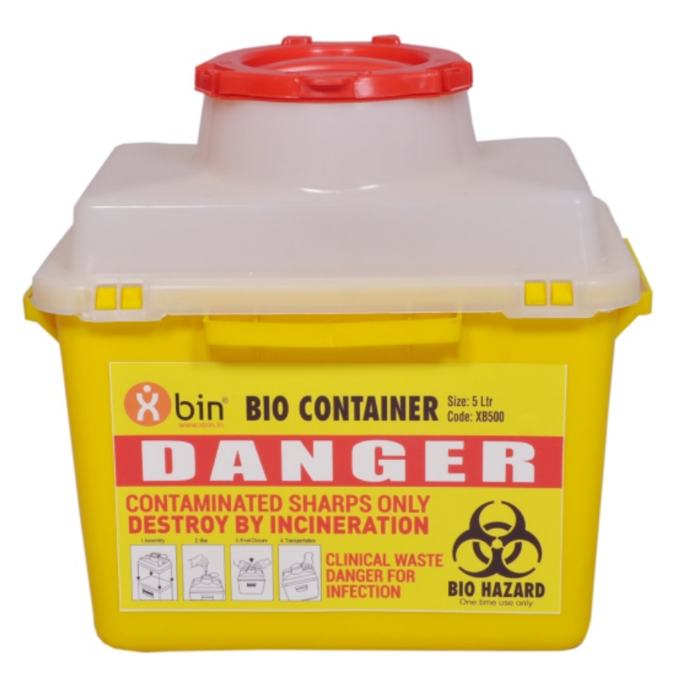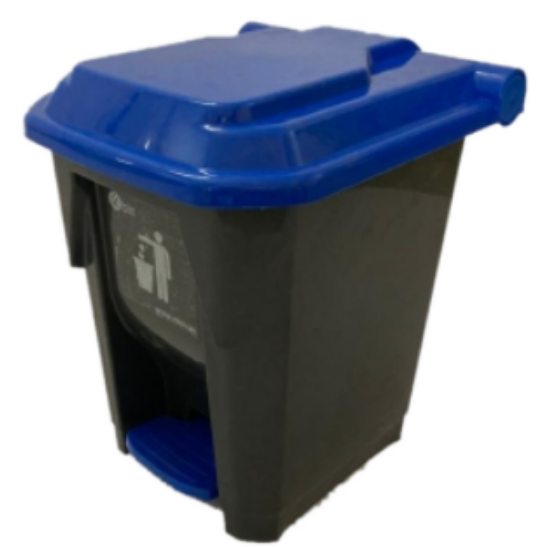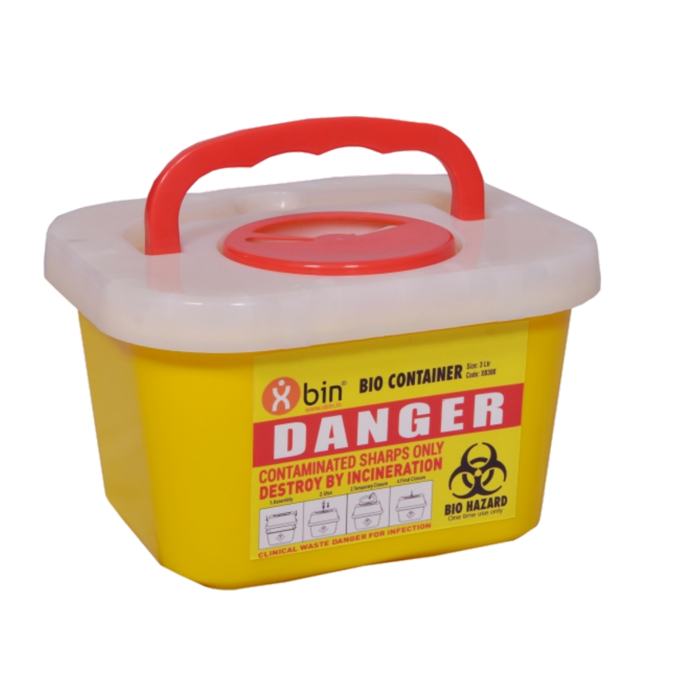What are Biomedical waste management colour coding?
Biomedical waste management color coding is a system that is used to identify and classify different
types of biomedical waste based on their potential risk to public health and the environment. This system
is used to ensure that biomedical waste is properly handled, transported, and disposed of, and to reduce
the risk of exposure to hazardous materials.
Here is a list of some common biomedical waste management color codes that are used:
- Red: Sharps (needles, scalpels, etc.)
- Yellow: Pathological waste (human or animal tissue, body parts, etc.)
- Orange: Microbiological waste (laboratory cultures, biologicals, etc.)
- White: Plastic waste (plastic bags, tubing, etc.)
- Blue: Chemical waste (chemicals, pharmaceuticals, etc.)
These color codes may vary depending on the location and the specific waste management practices in
place. It's a good idea to check with your local waste management agency or municipality to find out what
the specific biomedical waste management color codes are in your area.
What are steps for Proper medical waste disposal?
Proper medical waste disposal is important to protect the environment and public health.
Here are some steps for proper medical waste disposal::
- Segregation: Keep hazardous medical waste separate from regular trash.
- Labeling: Label medical waste containers as hazardous.
- Storage: Store medical waste in a secure, designated area.
- Transport: Transport medical waste in a secure, leak-proof container.
- Treatment: Treat medical waste to kill pathogens and render it safe to handle.
This can be done through autoclaving, chemical disinfection, or incineration.
- Disposal: Dispose of treated medical waste according to local regulations.
Note that specific regulations and requirements for medical waste disposal may vary
depending on your location. It is important to follow the guidelines and laws set by your
local government and facility.
Why Proper medical waste disposal is necessary?
Proper medical waste disposal is necessary to protect the environment and public health.
Medical waste, such as used needles, sharps, and infectious materials, can carry harmful
bacteria and viruses that can cause serious infections and diseases. Improper disposal of
medical waste can lead to the contamination of soil and water, and can also put waste handlers
and the general public at risk of injury and infection. Proper medical waste disposal involves
properly treating and disposing of medical waste to ensure that it does not pose a risk to the
environment or public health.
Importance of segregating of medical waste?
Segregation of medical waste means keeping hazardous medical waste separate from regular trash.
It is the first step in proper medical waste disposal. Segregation helps to prevent the contamination
of regular trash with hazardous materials, and also helps to ensure that medical waste is properly
treated and disposed of.
Medical waste should be placed in designated medical waste containers, which should be clearly labeled
as hazardous. These containers should be kept in a secure, designated area until they are ready to be
transported for treatment and disposal.
Segregation is important because it helps to minimize the risk of injury and infection to waste handlers
and the general public, and also helps to protect the environment from contamination. It is important
to follow proper segregation guidelines to ensure that medical waste is handled safely and responsibly.
How medical waste should be disposed?
Medical waste should be treated to kill pathogens and render it safe to handle before it is disposed of.
There are several ways to treat medical waste:
- Autoclaving: This method uses high-pressure steam to kill bacteria and viruses.
- Chemical disinfection: This method uses chemicals to kill pathogens.
- Incineration: This method uses high temperatures to burn medical waste and reduce it to ash.
After the medical waste has been treated, it can be disposed of according to local regulations. In most
cases, treated medical waste is disposed of in a landfill or an incinerator specifically designed to handle
hazardous materials.
It is important to follow proper medical waste disposal guidelines to ensure that the waste is treated and
disposed of safely and responsibly. Regulations and requirements for medical waste disposal may vary depending
on your location, so it is important to follow the guidelines and laws set by your local government and facility.
Importance of color-coded collection containers in Hospitals
Using color-coded collection containers in hospitals can help to ensure that medical waste is properly
segregated and handled. Different colors of containers may be used to denote different types of medical waste,
such as sharps, infectious waste, and pharmaceutical waste.
For example, red containers may be used for sharps, yellow containers may be used for infectious waste, and blue
containers may be used for pharmaceutical waste. Using color-coded containers can help to make it easier for
hospital staff to identify and properly dispose of different types of medical waste.
Color-coded collection containers can also help to reduce the risk of injury and infection to hospital staff and
the general public. By clearly identifying hazardous materials and keeping them separate from regular trash,
hospitals can help to ensure that medical waste is handled safely and responsibly.
How medical waste shoud be handled?
Medical waste should be handled with care to minimize the risk of injury and infection. Here are some guidelines for handling medical waste:
- Wear protective gear: When handling medical waste, it is important to wear gloves, gowns, and other protective gear to reduce the risk of injury and infection.
- Use proper lifting techniques: Use proper lifting techniques to avoid injury when handling heavy medical waste containers.
- Follow proper segregation guidelines: Keep hazardous medical waste separate from regular trash and follow proper segregation guidelines to ensure that it is handled safely and responsibly.
- Follow proper disposal guidelines: Follow proper disposal guidelines for medical waste to ensure that it is treated and disposed of safely and responsibly.
It is important to follow these guidelines to minimize the risk of injury and infection to waste handlers and
the general public, and to protect the environment from contamination. Medical waste can carry harmful bacteria and
viruses that can cause serious infections and diseases, so it is important to handle it with care.

